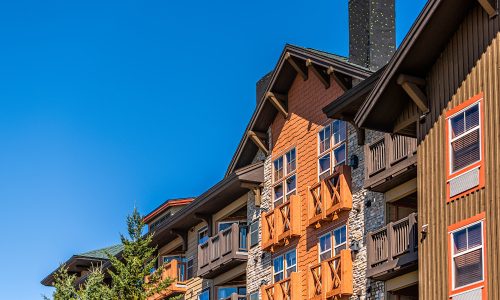The term ‘smart home’ has risen to meteoric popularity among homeowners (and manufacturers) as of late. While nowadays every other company seems intent on slapping the word “smart” onto a gadget to turn heads, it hasn’t seemed to fatigue most people of the idea. If anything, advances in technology such as the Matter protocol have only ramped up accessibility to the category. Plus, the benefits of smart tech is just too good to pass up in most cases.
Continuous, uninterrupted power, lights that flip on and off based on presence, high fidelity sound right at your fingertips. Ever since the 70s people have been dreaming of it and now, it seems like a lot of those dreams are finally here.
Granted, all that popularity may depend on where in the US we’re talking about, according to research conducted by the home technology experts over at Smarthomestarter.com. The research was conducted by analyzing Google search data regarding smart home-related keyword searches and breaking it down on a state-by-state basis.
The research also identified the most popular smart home brands being searched today by homeowners.
Most Popular States for Smart Homes Broken Down by Population
If popularity was based on sheer volume of searches, New York would win by a landslide with 242,940 total searches for smart home-related topics occurring each month. However, breaking it down based on density of searches within a specific population, leaves us with a very different spread.
The following are the top 10 states where smart home interest ranks the highest:
- West Virginia: Average 1,877 searches per month per 100,000 population.
- Wisconsin: Average 1,743.5 searches per month per 100,000 population.
- Vermont: Average 1,632 searches per month per 100,000 population.
- North Dakota: Average 1,475.8 searches per month per 100,000 population.
- Alaska: Average 1,421.8 searches per month per 100,000 population.
- South Dakota: Average 1,253 searches per month per 100,000 population.
- New York: Average of 1,234.6 searches per month per 100,000 population.
- Delaware: Average 1,186.2 searches per month per 100,000 population.
- Rhode Island: Average 1,165.7 searches per month per 100,000 population.
- Nebraska: Average 1,089 searches per month per 100,000 population.
Google Home Hub was among the keywords with the highest search volume followed by Philips Hue lightbulbs, both being incredibly popular DIY brands among consumers.
What’s Generating All the Interest?
The results are markedly different from locations within the US that are traditionally considered hot markets for integration and smart home companies. States like Florida and Texas don’t even make the list in terms of interest.
However, that the states listed are exhibiting intense interest in the smart home category, it’s not too unsurprising, according to the study. For instance, despite the reputation West Virginia has for its coal industry, the state has been seeing a tremendous amount of investment into its tech sector over the years.
Likewise, Nebraska and Rhode Island have both seen similar investments being made into the technology sector, with the stretch between Omaha and Lincoln commonly being referred to as the ‘Silicon Prairie.’
Meanwhile, states such as North and South Dakota are renowned for having some of the best broadband internet in the country, which heavily lends itself to smart homes connected to the internet.
Similarities also crop up in both the seasonal climates of each state and the population distribution. Nearly every state listed is known for having particularly frigid winters while also having large rural populations, the latter potentially hinting at a correlation between heightened interest in areas where skilled technicians may not be immediately available.
“It is fascinating to see which states have the greatest interest in smart home technology,” said a spokesman on behalf of smarthomestarter.com. “Smart homes have a lot to offer, from energy efficiency to security and peace of mind, to productivity, to a better quality of life, to simply increasing the entertainment value of what you do at home. West Virginia seems to agree, with their top ranking in searches speaking to their interest in the potential of smart homes to meet their needs.
“Throughout all the entries, energy efficiency is a common need to be met, since devices like smart switches and smart thermostats are high on the list of searches for the featured states. With energy being as expensive as it is now, it is prudent to do what you can to reduce your bills. It’s also of note how many states in the top 10 have relatively colder climates than the national average, including Alaska, which is the coldest state on average in the union.”
States with the Most Smart Homes Being Built
It’s interesting to note that among the states where there is the most interest in smart homes, there also seems to be the least number of smart homes available. Pulling data from American Home Shield on smart home listings across the US, Florida and Texas win by a landslide with over 2,000 smart homes currently listed in each state.
The next closest is South Carolina at 1,714 listings, then North Carolina at 1,454 listings. Both California and Iowa follow, nearly breaking 1,000 listings in each state. West Virginia, meanwhile, has just 31 listings.
Looking at the the other top interest states, South Dakota only has 14. Alaska has eight. Out of all those listed, Wisconsin has by far the most with 158, however the next closest are Nebraska (69) and Delaware (56) with the rest experiencing sharp drop-offs afterwards.
What’s doubly interesting is that, when looking at the density of smart homes compared to existing home stock, Iowa has the highest density of smart homes over every other state, with 85 smart homes per 1,000 home listings.
For comparison, Florida and Texas, two of the most popular smart home markets amongst integrators, have a density of 22 and 21 per 1,000 listings respectively.







